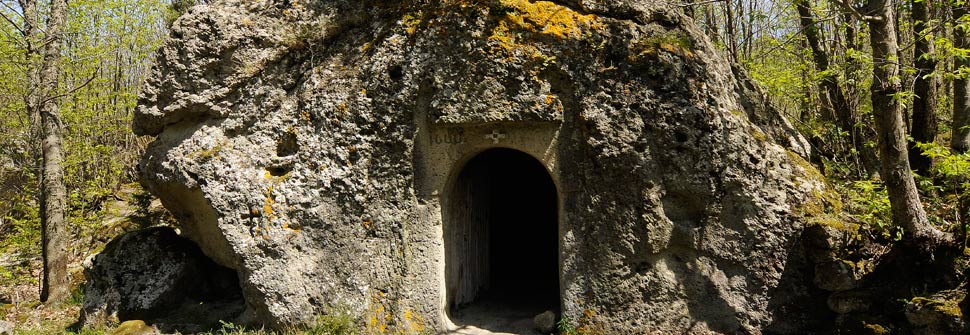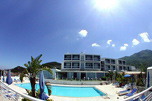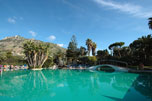Description
In the area of Falanga, extended plateau Epomeo rich in chestnut, located approximately 600 meters which was named the outstanding environmental morphology, more than anywhere else you can see through the vegetation tuff boulders fallen from Epomeo millennia ago. One of the many famous local people is Perciata Stone, that is perforated (probably from the weather), any noise in the vicinity causes sound echoes inside, as if it produced the same sounds. Conducting agricultural island, dominated mostly by vineyards, drove the peasants in 1600, a laborious work of arrangement of steep slopes up to Falanga.
Given the considerable distance from population centers, in the vast territory below the summit of Epomeo farmers found many tuffaceous rocks which make the temporary shelters. The complex of boulders plunged facilitated this regard by providing material for the construction of temporary dwellings, obtained thanks to a work of transformation and inside the decor, reduced to 'essential, was carved directly into the walls while outside you notice the absence of steps to reach the top of the rock, and this is because Falanga, hardly accessible and also not suitable as a place of observation, made it unnecessary to build such a complex architectural component.
The forested plateau reminiscent of other semi-rural activities, linked to the consumption of wine, such as the collection and preservation by deep circular pits of snow, a custom, apparently seasonal, which was rooted in the folk tradition so as to constitute a ritual to be performed during the most cold of winter. The farmers, after having gathered in the center of Fountain, dressed in traditional costumes singing and accompanying himself, went to the pits to fill with snow, then covered with dry branches for easy storage until the summer when it was taken to make more pleasant wine.
Currently, Falanga is completely abandoned, and the whole area covered by a lush forest of chestnut.
Given the considerable distance from population centers, in the vast territory below the summit of Epomeo farmers found many tuffaceous rocks which make the temporary shelters. The complex of boulders plunged facilitated this regard by providing material for the construction of temporary dwellings, obtained thanks to a work of transformation and inside the decor, reduced to 'essential, was carved directly into the walls while outside you notice the absence of steps to reach the top of the rock, and this is because Falanga, hardly accessible and also not suitable as a place of observation, made it unnecessary to build such a complex architectural component.
The forested plateau reminiscent of other semi-rural activities, linked to the consumption of wine, such as the collection and preservation by deep circular pits of snow, a custom, apparently seasonal, which was rooted in the folk tradition so as to constitute a ritual to be performed during the most cold of winter. The farmers, after having gathered in the center of Fountain, dressed in traditional costumes singing and accompanying himself, went to the pits to fill with snow, then covered with dry branches for easy storage until the summer when it was taken to make more pleasant wine.
Currently, Falanga is completely abandoned, and the whole area covered by a lush forest of chestnut.






















